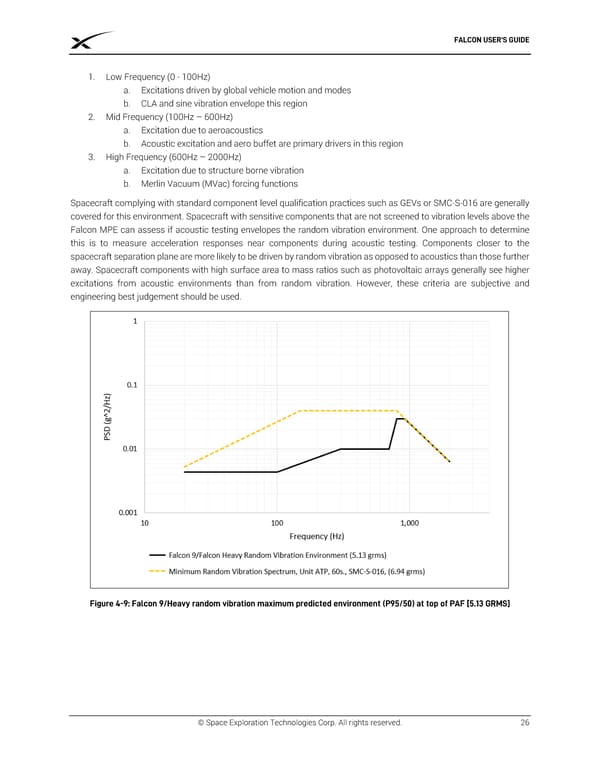FALCON USER’S GUIDE 1. Low Frequency (0 - 100Hz) a. Excitations driven by global vehicle motion and modes b. CLA and sine vibration envelope this region 2. Mid Frequency (100Hz – 600Hz) a. Excitation due to aeroacoustics b. Acoustic excitation and aero buffet are primary drivers in this region 3. High Frequency (600Hz – 2000Hz) a. Excitation due to structure borne vibration b. Merlin Vacuum (MVac) forcing functions Spacecraft complying with standard component level qualification practices such as GEVs or SMC-S-016 are generally covered for this environment. Spacecraft with sensitive components that are not screened to vibration levels above the Falcon MPE can assess if acoustic testing envelopes the random vibration environment. One approach to determine this is to measure acceleration responses near components during acoustic testing. Components closer to the spacecraft separation plane are more likely to be driven by random vibration as opposed to acoustics than those further away. Spacecraft components with high surface area to mass ratios such as photovoltaic arrays generally see higher excitations from acoustic environments than from random vibration. However, these criteria are subjective and engineering best judgement should be used. Figure 4-9: Falcon 9/Heavy random vibration maximum predicted environment (P95/50) at top of PAF [5.13 GRMS] © Space Exploration Technologies Corp. All rights reserved. 26
 SPACEX FALCON USER’S GUIDE Page 29 Page 31
SPACEX FALCON USER’S GUIDE Page 29 Page 31